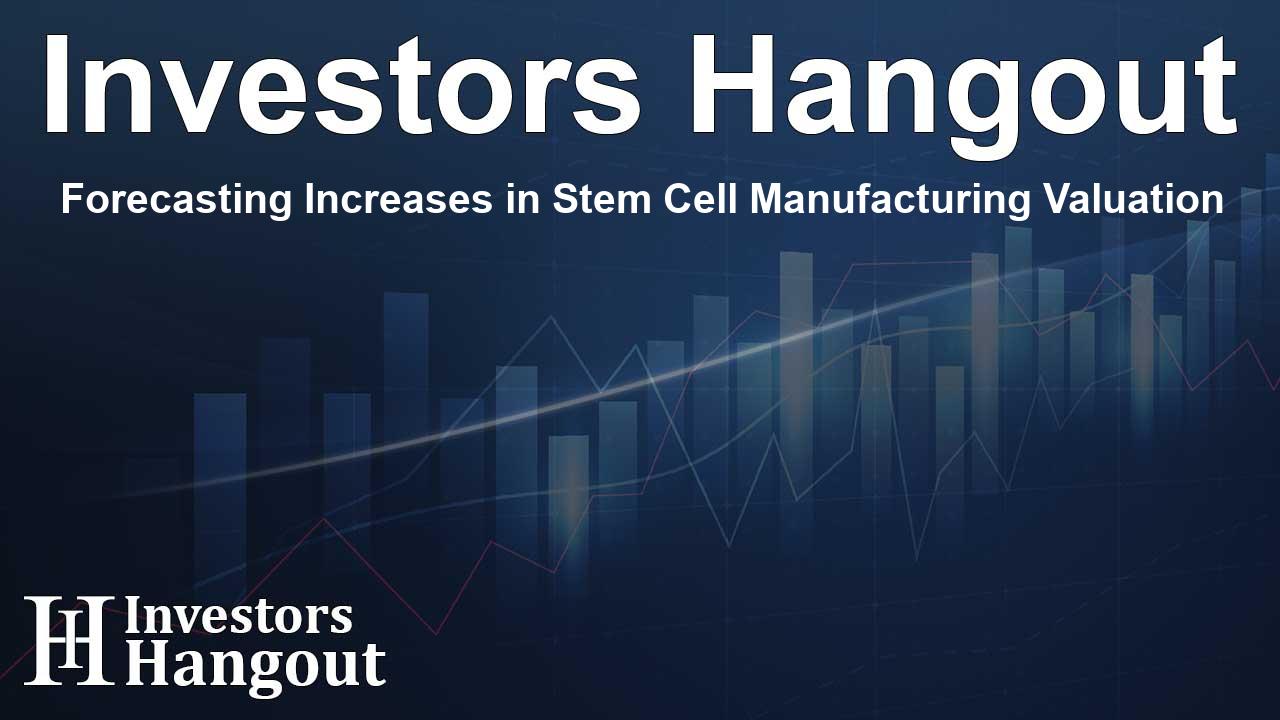Forecasting Increases in Stem Cell Manufacturing Valuation

Growth Projections for the Stem Cell Manufacturing Market
The global stem cell manufacturing market is undergoing transformative changes, projected to achieve a remarkable valuation of US$ 65.49 billion by 2033. This significant increase follows a valuation of US$ 24.26 billion in previous years, illustrating the sector's robust growth potential with a compound annual growth rate (CAGR) of 11.96% from 2025 through 2033.
Clinical Trials and Patient Advancements
The driving force behind this surge is the remarkable volume and variety of clinical trials currently in progress. As of late, over a hundred global trials are examining around 83 unique human pluripotent stem cell (hPSC) products. These trials aim to provide advanced therapeutic solutions, benefitting more than 1,200 patients and utilizing an impressive 100 billion hPSC-derived cells so far.
Key Findings in Market Dynamics
A thorough analysis indicates 112 distinct stem cell-based trials target a broad spectrum of diseases. A standout trend is the rise of allogeneic "off-the-shelf" therapies with over 500 active clinical trials, focusing on scalable and ready-to-administer treatments. Noteworthy advancements come from leading companies like Vertex Pharmaceuticals and GIOSTAR, with FDA-approved trials pushing the boundaries of stem cell therapies.
Regulatory Support and Market Entry Acceleration
Regulatory bodies worldwide are crucial in facilitating market entry and investment by streamlining approval pathways for cell therapy. For instance, significant reforms adopted in the U.K. have modernized the clinical trial framework, while U.S. FDA approvals of innovative stem cell therapies like Ryoncil and BlueRock Therapeutics' platform have validated new production technologies.
Investment Trends Fueling Manufacturing Infrastructure
The stem cell manufacturing sector currently benefits from unprecedented capital inflows. Public and private investment, including a robust commitment from the U.S. National Institutes of Health (NIH) with over $6 billion allocated in 2024 for stem cell research, play a pivotal role. Canadian investments like the $49.9 million directed to STEMCELL Technologies reflect a dedication to developing both infrastructure and skilled workforce.
Strategic Mergers and Acquisitions
The competitive landscape is evolving with increased mergers and acquisitions within the stem cell manufacturing realm. For example, Century Therapeutics’ acquisition of Clade Therapeutics marks a significant consolidation within the market. Additionally, major deals involving companies such as Vertex Pharmaceuticals and Thermo Fisher Scientific underline the intense competitive dynamics fostering innovation.
Shifts Toward Allogeneic Therapies
The industry is witnessing a crucial shift towards allogeneic "off-the-shelf" therapies, allowing for mass production capabilities compared to traditional personalized approaches. Currently, over 60 allogeneic products are in advanced phases of clinical trials, necessitating large manufacturing runs and a significant expansion of master cell banks.
Global Manufacturing Capacity Expansion
To keep pace with this predicted demand, manufacturers are rapidly extending their operational capabilities. For instance, Lonza is leading an expansion with a new facility designed to bolster cell and gene therapy production significantly. Such trends are echoed globally as companies invest in infrastructure to meet escalating needs.
Innovation Through Automation and AI
Adopting advanced technologies like automation and AI is reshaping operational precision and scalability in the stem cell manufacturing sector. Several firms are launching AI-driven solutions aimed at enhancing reproducibility and monitoring production processes more effectively. This trend promises further efficiencies in scaling operations.
Challenges in Raw Material Sourcing
The rapid growth of the stem cell manufacturing market has led to challenges in securing high-purity raw materials. Many manufacturers are grappling with supply chain issues, evidenced by extended lead times for critical materials. Despite disruptions, the production of key materials has seen an uptick as companies form new partnerships to mitigate these risks.
Regional Insights: Dominance and Growth Potential
North America is set to maintain its leading position in the global stem cell manufacturing market, anticipated to hold a sizable share by 2033. Supported by strong funding and an ecosystem conducive to innovation, the region is asserting its dominance as it witnesses a significant rise in clinical trials and regulatory approvals.
Future Prospects in the Asia Pacific
While North America captures the largest market share, the Asia Pacific region is rapidly emerging as a critical player, driven by a surge in clinical trial registrations and approvals. This evolution mirrors an increasing focus on developing robust regulatory frameworks in countries like Japan and South Korea.
Frequently Asked Questions
What is the expected market valuation for the stem cell manufacturing sector by 2033?
The market is anticipated to reach a valuation of US$ 65.49 billion by 2033.
What are the primary drivers behind the growth of this market?
Key drivers include rising chronic disease prevalence necessitating regenerative medicine, increased funding for cell therapies, and advancements in manufacturing technology.
What regulatory changes have aided market expansion?
Regulatory bodies have streamlined approval processes for cell therapies, making entry into the market smoother and less risky for manufacturers.
How is AI influencing stem cell manufacturing?
AI is enhancing precision and efficiency in manufacturing processes, offering new monitoring solutions that reduce errors and improve product consistency.
Which regions are leading in stem cell manufacturing?
North America currently leads the market, but the Asia Pacific region is showing significant growth potential with increasing clinical trials and product approvals.
About The Author
Contact Olivia Taylor privately here. Or send an email with ATTN: Olivia Taylor as the subject to contact@investorshangout.com.
About Investors Hangout
Investors Hangout is a leading online stock forum for financial discussion and learning, offering a wide range of free tools and resources. It draws in traders of all levels, who exchange market knowledge, investigate trading tactics, and keep an eye on industry developments in real time. Featuring financial articles, stock message boards, quotes, charts, company profiles, and live news updates. Through cooperative learning and a wealth of informational resources, it helps users from novices creating their first portfolios to experts honing their techniques. Join Investors Hangout today: https://investorshangout.com/
The content of this article is based on factual, publicly available information and does not represent legal, financial, or investment advice. Investors Hangout does not offer financial advice, and the author is not a licensed financial advisor. Consult a qualified advisor before making any financial or investment decisions based on this article. This article should not be considered advice to purchase, sell, or hold any securities or other investments. If any of the material provided here is inaccurate, please contact us for corrections.
